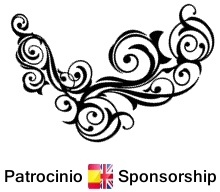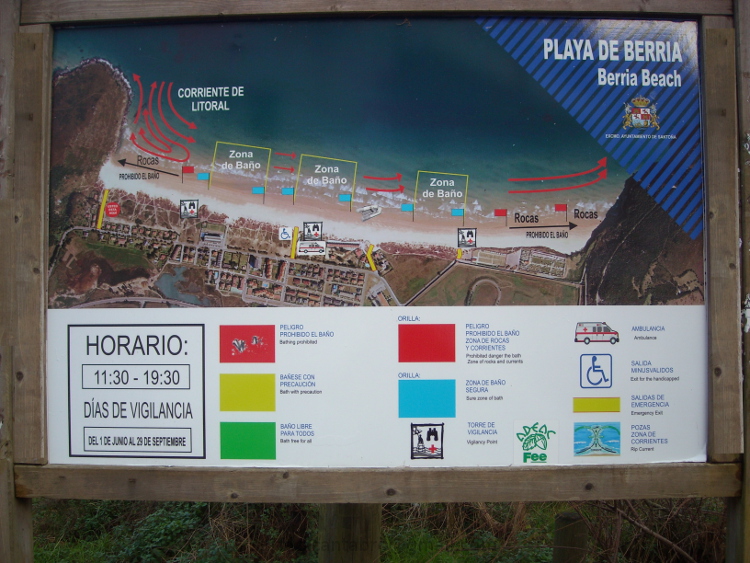 En aquel día había pocas olas en Cantabria. Cuatro o cinco zonas con poco tamaño y algún spot secreto habilitaban la practica del surf. Las principales playas de Santander registraban olas tenues que apenas peinaban la arena de la orilla.
En aquel día había pocas olas en Cantabria. Cuatro o cinco zonas con poco tamaño y algún spot secreto habilitaban la practica del surf. Las principales playas de Santander registraban olas tenues que apenas peinaban la arena de la orilla.
Con este panorama, y después de consultar el estado del mar; me dirigí hacia Loredo. En La Curva casi siempre hay olas. Aunque el tamaño pueda ser pequeño, conservan la suficiente fuerza para realizar surf. Y poder satisfacer el impulso de navegar obteniendo la pasión que el mar nos devuelve.
A la llegada, el parking principal estaba repleto. A lo lejos se divisaba gente en el agua. Varios riders, separados por una distancia, cabalgaban las misma ola. Esto se sucedía conforme avanzaba la serie. Al menos había una ola y un momento para cada persona. Preparé el material, me cambié y cerré el vehículo. La distancia que caminé hasta La Curva me sirvió para calentar. Tropecé con una par de surfers y hablamos sobre el estado de las olas. Dentro del agua me coloqué en una zona menos ocupada. Al poco tiempo vino una ola ligera. Me alcanzó e hice un suave recorrido. Esto se repitió espaciado en el tiempo tres veces más. Vi llegar una ola de mayor tamaño a lo lejos. Un surfer se alzó sobre ella y comenzó a descender. Iba esquivando gente y trazando el recorrido con precaución. Nadie después de él se cruzaba en su trayectoria. Había buenas sensaciones observando que todo el mundo respetaba aquello.
Pasaron las horas y la playa se fue vaciando. Unos minutos de quietud alisaron la superficie del mar. Una mirada rápida me reveló huecos en buenas zonas. Emprendí la marcha remando poco a poco. Una nueva serie de olas apareció al fondo. Su tamaño en la distancia disparó mis pulsaciones e hizo que aumentase el ritmo. Al llegar vi como otros riders se iban posicionando también. Pasó la primer ola. La segunda ola tenía mayor volumen de agua. Cuando arribó, me incline hacia delante y conseguí subirme en ella. Otro surfer a mi derecha también lo consiguió. Navegando a la par mantuvimos la distancia. El punto de inflexión en el que la ola abre a ambos lados en La Curva se iba acercando. Al llegar separamos las trayectorias coordinadamente. Cada uno se deslizó hacia un lado. Una sensación de confort me invadió. Finalicé el recorrido a pocos metros de la orilla.
Otra vez hacia mar a dentro. Se sucedían los trazos sobre las olas y la gente estaba disfrutando. Pensando en las maniobras caí en la cuenta de lo que había disfrutado. Con esta idea decidí esperar una última ola y retirarme después. Posicionado en un punto intermedio de la zona, espere mi turno. Una nueva serie comenzó. La segunda ola parecía mejor. Pero al elevarme con la llegada de la primera sentí que esa era la ola. Remé con fuerza y me dispuse a deslizarme hacia la izquierda. De repente vi como un rider, que había cogido antes la ola, se dirigía hacia mi. Ya en lo alto y sin apenas tiempo de reacción, la vuelta atrás no era posible. Sentí el tiempo relentizarse a medida que nos acercabamos. Agarré con fuerza el nose del bodyboard, y tirando hacia mi, permanecí anclado sobre el tail. Contemplé como el surfer trazaba su trayecto debajo de mí. Su invento se deslizaba sobre la superficie del agua a metro y medio de la tabla. Me incliné hacia atrás para aguantar un instante más. Por fin pasó. Con el hueco abierto fui resbalando por la pared de la ola hasta llegar a la base. Tracé el recorrido hacia la izquierda. Un tiempo después realicé un quiebro a cada lado para acabar el viaje ya cerca de la orilla.
De vuelta al coche la adrenalina envolvía mis sensaciones. Tres palabras rondaban mi pensamiento : «Precaución, respeto y pasión«.
Maneuvers in «La Curva«
 In that day, there were few waves in Cantabria. Four or five areas with little size and some secret spots were adequate for surfing. The main beaches of Santander had recorded small waves that barely drank the sand of the shore.
In that day, there were few waves in Cantabria. Four or five areas with little size and some secret spots were adequate for surfing. The main beaches of Santander had recorded small waves that barely drank the sand of the shore.
With this situation, and after consulting the state of the sea, I went toward Loredo. In La Curva there is almost always waves. Although the size may be small, it usually have enough force to surfing. And be able to satisfy the momentum to navigate, as we can enjoy the passion that the sea returns us.
On the arrival, the main parking was packed. In the distance I saw people in the water. Several riders, separated by a distance, rode the same wave. This happened as the waves progressed. At least there was a wave and a time for each person. I prepared the material, dressed the wetsuit and closed the vehicle. The distance to La Curva served me to warm up. I stumbled upon a couple of surfers and we talked about the state of the waves. Within the water I went to a less occupied area. Then came a slight wave. I reached and I made a smooth journey. This was repeated three times along the time. I saw a bigger wave in the distance that would come to us. A surfer stood up on it and he began to descend. He was dodging people and he was plotting the route carefully. No one had blocked her path. There were good sensations due to that respect.
The hours passed and the beach was empty. A few minutes of stillness alisaron the surface of the sea. A quick look revealed to me the good hollow areas. I started paddling slowly. A new series of waves appeared far away. Its size in the distance shot my pulsations and I increased my cadence. When I arrived I saw as other riders were also placed. The first wave faded. The second wave had greater volume of water. When it arrived, I lean forward and I got into it. Another surfer on my right side also succeeded in doing so. Navigating to the torque we kept a distance. The inflection point at which the wave opens to both sides in «La Curva» was getting closer. On arrival we coordinated to divide the trajectories. Each path to one side. A feeling of comfort invaded me. I finished the trip a few meters from the shore.
I returned to the sea. A lot of surfers were ridden the waves and the people was enjoying. Thinking in the maneuvers I realized what had enjoyed. With this idea I decided to wait one last wave and to go out. Positioned at an intermediate point of the area, wait for my turn. A new series began. The second wave seemed to be better. But the elevarme with the arrival of the first wave I felt that it was the wave. I rowed with force and I arranged to glide to the left. Suddenly I saw as a rider, which had yet got the wave, was heading toward me. As I was in the top and I had a little reaction time, the turning back was not possible. I felt that the time was stopped as we approached. I gripped hard the nose of the bodyboard, and pulling it to me, I stayed anchored on the tail. I watched as the surfer sketched his journey beneath me. His leash was sliding on the surface of the water, at a meter and a half of the board. I tilt backward to endure a moment longer. He finally passed over. As the path was open I was slipping through the wall of the wave until you reach the base. I drawn the way to the left. After a time I performed a cut back on each side to end the trip already close to the shore.
Back at the car the adrenaline bathed my sensations. Three words had been haunting my thoughts : «Caution, respect and passion«.

![]() La Playa de Berria tiene una longitud de 2200 metros. Es una joya de costa Cántabra, ya que a su contexto natural idílico, se le añade la naturaleza cambiante de sus aguas según la zona de la playa de la que se trate, por la proximidad a las rocas o las fuertes corrientes presentes. Por todo esto, el Ayuntamiento de Santoña ha publicado, a pie de playa en Berria, unos mapas fotográficos, trípticos con toda la información de la Playa de Berria y sus aguas. Es útil prestar atención a ese tipo de información si vamos a practicar surf o realizar otras actividades en las mejores condiciones, de forma segura. Aquí dejo una fotografía de uno de estos carteles.
La Playa de Berria tiene una longitud de 2200 metros. Es una joya de costa Cántabra, ya que a su contexto natural idílico, se le añade la naturaleza cambiante de sus aguas según la zona de la playa de la que se trate, por la proximidad a las rocas o las fuertes corrientes presentes. Por todo esto, el Ayuntamiento de Santoña ha publicado, a pie de playa en Berria, unos mapas fotográficos, trípticos con toda la información de la Playa de Berria y sus aguas. Es útil prestar atención a ese tipo de información si vamos a practicar surf o realizar otras actividades en las mejores condiciones, de forma segura. Aquí dejo una fotografía de uno de estos carteles.![]() Berria Beach has a length of 2200 meters. It is a jewel of the Cantabrian coast, because to its natural idyllic context, is added the changing nature of their waters according to the area of the beach, the proximity to the rocks or the strong currents. Due to this, the Town Hall of Santoña has published, on the beachfront of Berria, some photographic maps and brochures with all the information about the beach of Berria, and its waters. It is useful to pay attention to that kind of information if we are going to play surf or another activities in the best conditions, safely. Here is a photograph of one of these posters.
Berria Beach has a length of 2200 meters. It is a jewel of the Cantabrian coast, because to its natural idyllic context, is added the changing nature of their waters according to the area of the beach, the proximity to the rocks or the strong currents. Due to this, the Town Hall of Santoña has published, on the beachfront of Berria, some photographic maps and brochures with all the information about the beach of Berria, and its waters. It is useful to pay attention to that kind of information if we are going to play surf or another activities in the best conditions, safely. Here is a photograph of one of these posters.![]()
![]()

![]()
![]()
